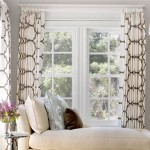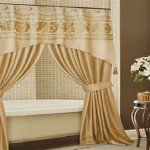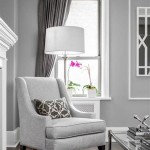William Morris At Home Curtains: A Timeless Aesthetic for Modern Living
William Morris, a pivotal figure in the Arts and Crafts movement, left an enduring legacy on the decorative arts. His designs, characterized by intricate patterns inspired by nature, continue to resonate with homeowners seeking a blend of beauty, craftsmanship, and historical significance. Among his most celebrated contributions are his textile designs, particularly those adapted for curtains. "William Morris At Home" curtains offer a way to incorporate this timeless aesthetic into modern living spaces, bringing a touch of artistry and sophistication to any room.
Morris's philosophy centered on the idea that art should be accessible to all and that functional objects should also be beautiful. He sought to counteract the perceived decline in design standards brought about by industrialization, advocating for handcrafted goods and a return to natural forms. This philosophy is evident in the meticulous detail and organic motifs found in his curtain designs. These designs often feature stylized flowers, foliage, birds, and animals, rendered in rich, harmonious colors. From iconic patterns like "Willow Bough" and "Strawberry Thief" to lesser-known but equally captivating designs, William Morris curtains offer a diverse range of options for creating a distinctive and inviting atmosphere.
The popularity of William Morris At Home curtains stems not only from their aesthetic appeal but also from their ability to evoke a sense of history and authenticity. They serve as a tangible link to a significant period in design history, allowing homeowners to connect with the values and ideals of the Arts and Crafts movement. Furthermore, the enduring quality of Morris's designs ensures that these curtains remain relevant and stylish, transcending fleeting trends and contributing to a timeless and enduring interior aesthetic.
Choosing William Morris At Home curtains involves careful consideration of several factors, including the existing décor, the desired level of light control, and the overall ambiance one wishes to create. The patterns range from delicate and understated to bold and dramatic, allowing for a wide range of stylistic interpretations. The selection of fabric also plays a crucial role, as the texture and weight of the material can significantly impact the appearance and functionality of the curtains.
Key Point 1: The Enduring Appeal of Natural Motifs and Harmonious Colors
One of the most distinctive characteristics of William Morris At Home curtains is their use of natural motifs. Morris drew inspiration from the flora and fauna of the English countryside, translating these elements into intricate and stylized patterns. These patterns often feature interwoven leaves, flowers, and vines, creating a sense of organic movement and visual complexity. The "Willow Bough" design, for example, showcases the graceful curves of willow branches, while "Strawberry Thief" depicts birds stealing strawberries from a garden, capturing a charming and whimsical narrative.
The color palettes used in William Morris curtains are equally important to their overall aesthetic. Morris was a master of color theory, employing muted and harmonious tones that create a sense of depth and richness. He often used natural dyes derived from plants and minerals, resulting in colors that are both subtle and vibrant. These colors evoke a sense of warmth and tranquility, contributing to a relaxing and inviting atmosphere. Common color combinations include shades of green, blue, red, and gold, often used in conjunction to create a balanced and visually appealing composition.
The careful integration of natural motifs and harmonious colors is what gives William Morris At Home curtains their enduring appeal. These elements work together to create a sense of beauty and harmony, evoking a connection to the natural world and enhancing the overall aesthetic of the room. The resulting visual experience is both calming and stimulating, offering a respite from the stresses of modern life and providing a sense of visual pleasure.
Key Point 2: Fabric Selection and Considerations for Light Control and Privacy
The choice of fabric is a critical factor in selecting William Morris At Home curtains, as it directly impacts their appearance, functionality, and durability. Different fabrics offer varying levels of light control, privacy, and insulation, making it essential to select a material that suits the specific needs of the room. Lighter fabrics, such as linen or cotton, allow more light to filter through, creating a bright and airy atmosphere. These fabrics are ideal for rooms where natural light is desired, such as living rooms or dining rooms.
Heavier fabrics, such as velvet or brocade, offer greater light control and privacy, making them suitable for bedrooms or home theaters. These fabrics block out much of the external light, creating a darker and more intimate atmosphere. They also provide better insulation, helping to regulate the temperature of the room and reduce energy costs. The weight and texture of the fabric can also impact the drape and overall appearance of the curtains, with heavier fabrics tending to hang more elegantly and create a more formal look.
In addition to light control and privacy, the durability of the fabric is an important consideration. William Morris At Home curtains are often viewed as an investment, and it is essential to choose a fabric that will withstand regular use and maintain its appearance over time. Fabrics that are resistant to fading, shrinking, and wrinkling are ideal for curtains, as they will require less maintenance and retain their beauty for longer. Natural fibers, such as cotton and linen, are generally durable and breathable, while synthetic fabrics, such as polyester, are often more resistant to stains and wrinkles.
Key Point 3: Integrating William Morris Curtains into Various Interior Design Styles
William Morris At Home curtains are remarkably versatile and can be seamlessly integrated into a wide range of interior design styles. While they are most commonly associated with traditional and Arts and Crafts interiors, they can also complement more contemporary designs. The key is to choose a pattern and color palette that harmonizes with the existing décor and enhances the overall aesthetic of the room.
In traditional interiors, William Morris curtains can be used to create a sense of warmth, elegance, and historical authenticity. Pairing them with antique furniture, rich wood finishes, and period-appropriate accessories can evoke the charm and sophistication of a bygone era. In Arts and Crafts interiors, William Morris curtains are a natural fit, complementing the handcrafted aesthetic and celebrating the beauty of natural materials. Combining them with rustic furniture, woven textiles, and earthy color palettes can create a cohesive and harmonious living space.
Even in more contemporary interiors, William Morris curtains can add a touch of character and visual interest. Choosing a bold and graphic pattern can create a focal point in a minimalist space, while selecting a subtle and understated design can add texture and depth to a modern interior. Pairing William Morris curtains with sleek furniture, clean lines, and neutral color palettes can create a striking contrast between traditional and contemporary elements, resulting in a unique and visually compelling design.
To successfully integrate William Morris At Home curtains into any interior design style, it is important to consider the scale of the pattern, the color palette, and the texture of the fabric. A large-scale pattern can be overwhelming in a small room, while a small-scale pattern may be lost in a large space. Similarly, a bold color palette can dominate a room, while a subtle color palette can blend seamlessly with the existing décor. Choosing a fabric with a texture that complements the other materials in the room can enhance the overall visual appeal and create a sense of harmony.
Ultimately, William Morris At Home curtains offer a timeless and versatile solution for adding beauty, character, and historical significance to any interior space. Their enduring appeal lies in their exquisite designs, harmonious colors, and ability to seamlessly integrate into a variety of design styles.
Beyond the aesthetic considerations, practicality should also be factored into the selection process. The ease of cleaning and maintenance is a significant factor, particularly for households with children or pets. Certain fabrics are more prone to stains and require professional cleaning, while others can be easily laundered at home. Considering the long-term upkeep requirements can help ensure that the curtains remain beautiful and functional for years to come.
The installation of William Morris At Home curtains can also impact their overall appearance and functionality. The choice of curtain rods, rings, and tiebacks can complement the design of the curtains and enhance their aesthetic appeal. Proper installation ensures that the curtains hang properly and provide the desired level of light control and privacy. Professional installation is recommended for heavier fabrics or complex window treatments to ensure a flawless and long-lasting result.

William Morris Blackthorn Green Made To Measure Curtains Designer Home Decor Etsy

William Morris At Home Acanthus Curtains Aldiss Of Norfolk

William Morris Curtains Strawberry Thief Custom Blackout Linen Drapes Black Vintage Floral Print Velvet Pattern Green Bedroom Etsy

William Morris At Home Ready Made Curtains Blinds Ashley Wilde

William Morris At Home Acanthus Flint Seymour S

Morris Co Made To Measure Curtains

William Morris Curtains Blue Floral Living Room Creaftsman Bungalow Window Treatments Stickley Home Curtain Etsy

William Morris At Home Acanthus Flint Seymour S

Floral Eyelet Blackout Thermal William Morris At Home Orla Kiely Curtains Homeware Curtainsandblinds Aspennigerias

Introducing The William Morris At Home Collection Sue Cardy








